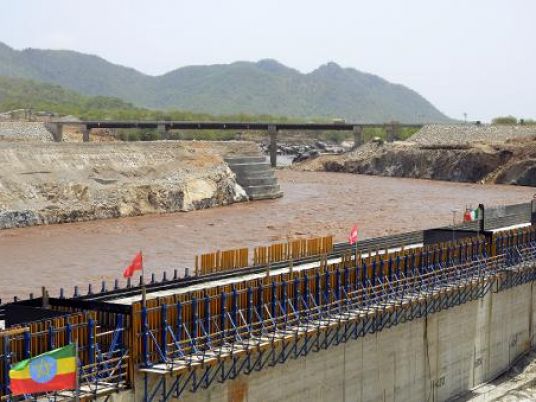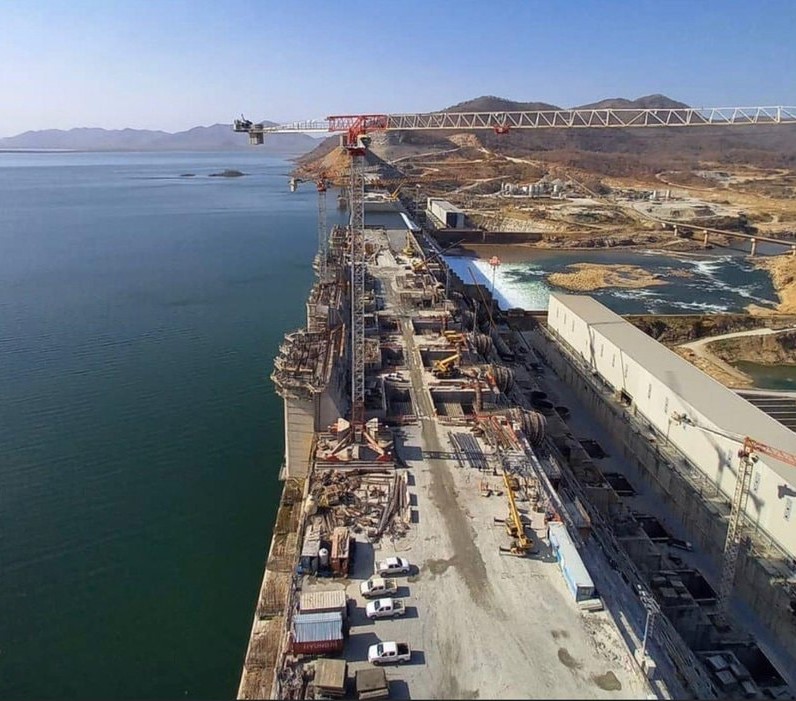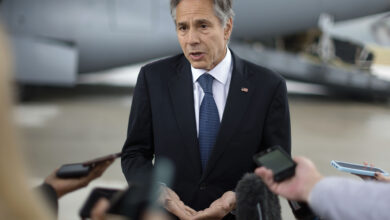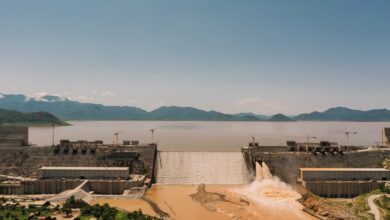
Zaki al-Beheiry, an African studies expert at Mansoura University, said in an interview with Al-Masry Al-Youm that the construction of the Ethiopian Renaissance Dam must be halted immediately, calling on President Abdel Fattah al-Sisi to hold an urgent summit meeting to discuss the risk assessments made on the dam by the French and Dutch consultants.
He warned that the dam could collapse because it is built in an earthquake zone, stressing that the city of Khartoum would flood if this were to happen.
He also said that Ethiopia needs electricity, not more water, and that the country could produce the electricity needed from smaller dams rather than from an enormous dam such as the Renaissance Dam.
He added that the dam would destroy some two million acres in Egypt if Ethiopia stores the water Egypt needs for irrigation.
Q: What do you think of the recent Sudanese-Ethiopian rapprochement?
A: It is normal because they are adjacent and have common interests. They are also members of the African Union, the COMESA and the IGAD. Any negotiations between Sudan and South Sudan, such as negotiations on the demarcation of the border and oil shares, normally take place in Ethiopia, and Ethiopia mediates between the two countries to resolve any issues.
Q: What about the negotiations on the Renaissance Dam?
A: We can say that the attitude of certain Nile Basin countries suggest that the ongoing negotiations would not yield satisfactory results for Egypt.
Ethiopia continues to build the dam to store water and generate electricity without agreeing with the downstream countries on specifications, which could have disastrous economic and social ramifications for Egypt.
I have called for a summit meeting of the presidents of Egypt, Sudan and Ethiopia for international mediation and arbitration.
Q: What practical steps should be taken now?
A: President Abdel Fattah al-Sisi should hold this meeting immediately and demand that construction stop until a proper assessment is completed.
Q: Why did tension increase between Egypt and the Nile Basin countries over the past few decades, especially with Ethiopia?
A: It goes back to the time when Egypt wanted to build the High Dam, which the United States and England offered to finance provided that Egypt sign a peace treaty with Israel. But when President Nasser refused the offer and gave the project to the Soviet Union, the United States sent a mission to study the water situation in Ethiopia and suggested that 33 dams should be built on the Blue Nile, including the Renaissance Dam, just to spite Egypt.
Q: Some say there is an American-Zionist plot behind the problem between Egypt and Ethiopia. Is this true?
A: Definitely. The plot aims to keep Egypt occupied with internal conflicts, Islamist forces and the Muslim Brotherhood first, then have it distracted with the water problem, all in order to avert Egypt’s key role in Arab issues and allow Israel to do what she wants.
Tom Engelhardt, the director of the Nation Institute, said the United States is replacing conventional war by creating sectarian and ethnic conflicts that destroy countries from within.
Also, the Ethiopian water scheme devised by the United States and Israel would prevent Egypt from developing Sinai, rendering it a vast desert with a small population so as not to pose a threat to Israel, and leaving it for extremist Islamist groups to fight Arab countries, starting with Egypt.
This would prompt the Palestinians in Gaza to try and take Sinai rather than endlessly fight Israel, which would lead to a war between Hamas and the Egyptian army. In other words, making wars between Arabs and Arabs rather than between Arabs and Israel.
Add to it that depriving Egypt of development and progress would make the Egyptians look for opportunities abroad, thereby killing any sense of belonging to their homeland.
Q: What are other risks from the Renaissance Dam?
A: The study of the American mission suggested a storage capacity of 14 billion cubic meters of water. But the Renaissance Dam, which is one of four dams to be built, will have a capacity of 74 billion cubic meters. It would thereby reduce the amount of water coming to Egypt by nine billion cubic meters per year during the filling stage, if it takes four to five years.
This means that two million acres of agricultural land in Egypt, that 10 million people live on, would be destroyed. It would also hamper many other agricultural development projects that rely largely on the Nile water. It would simply affect Egypt’s industrial, human and urban development.
The Renaissance Dam could collapse because it is built in an earthquake zone. If this happens, the city of Khartoum would be flooded and three dams in Sudan would collapse, namely the Roseires Dam, the Sennar Dam and the Merowe Dam. And if our High Dam collapses, the inhabitants of the Nile Valley will vanish.
The clock is ticking. Ethiopia has already completed 47 percent of the dam and 65 percent of the construction around it.
Q: What is the solution?
A: Ethiopia does not really need water. It needs electricity. Let us give her electricity.
We support development in the Nile Basin countries. And Ethiopian Prime Minister Desalegn said Ethiopia and Egypt will either drown together or swim together. Well, we chose to swim together. What will Ethiopia choose?
Egypt and Ethiopia failing to reach an agreement will only benefit the enemies.
Edited translation from Al-Masry Al-Youm



